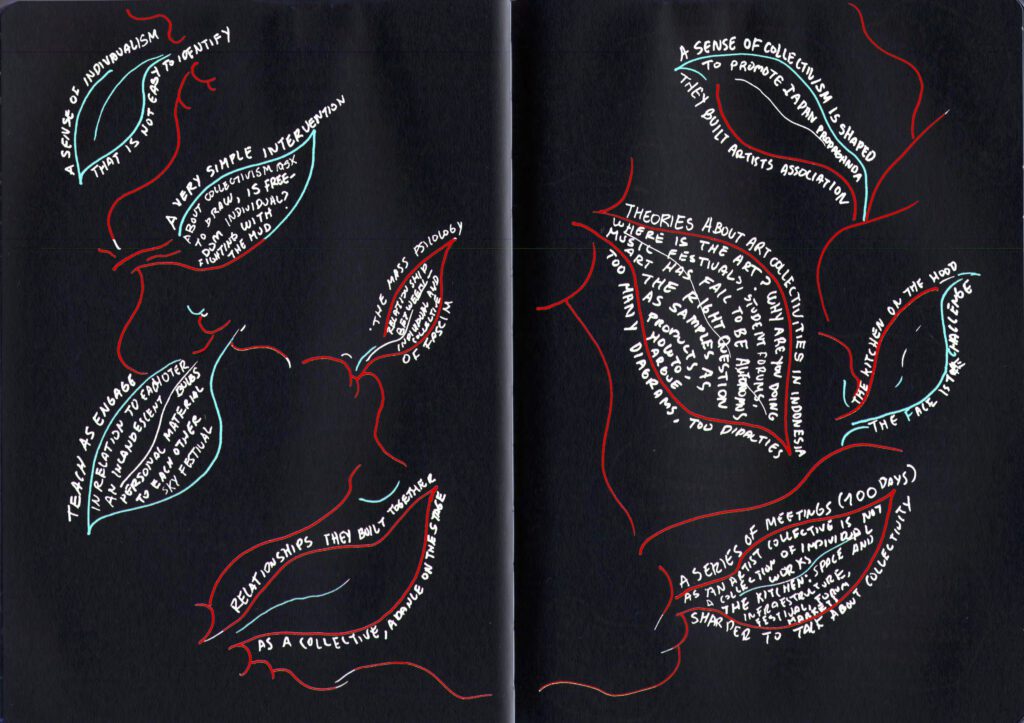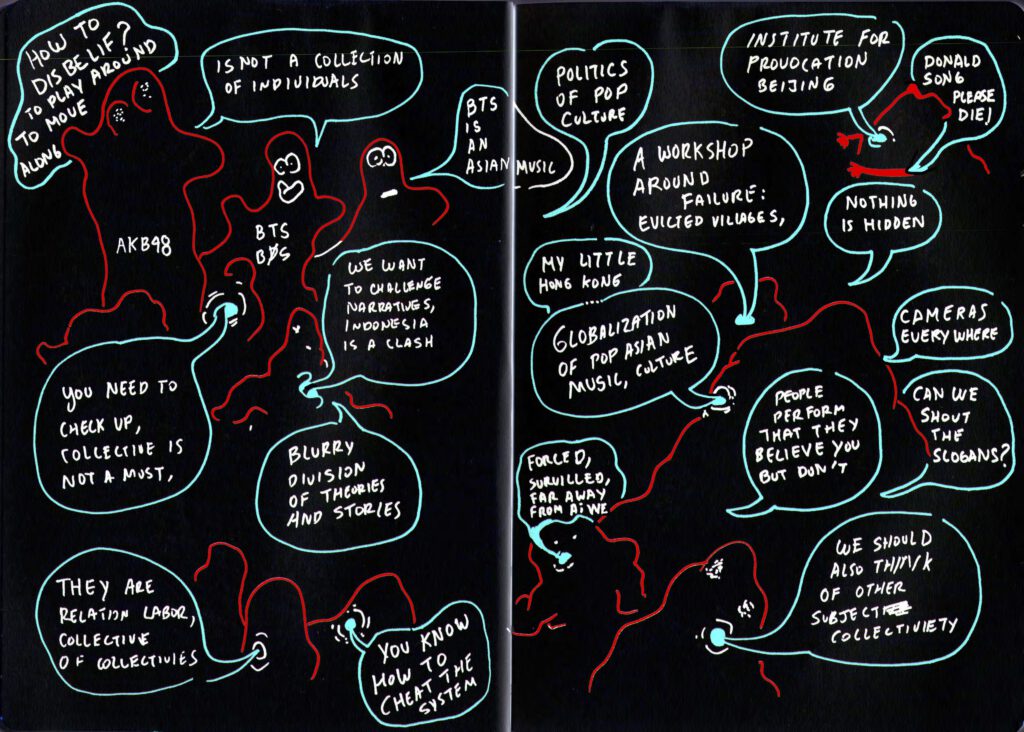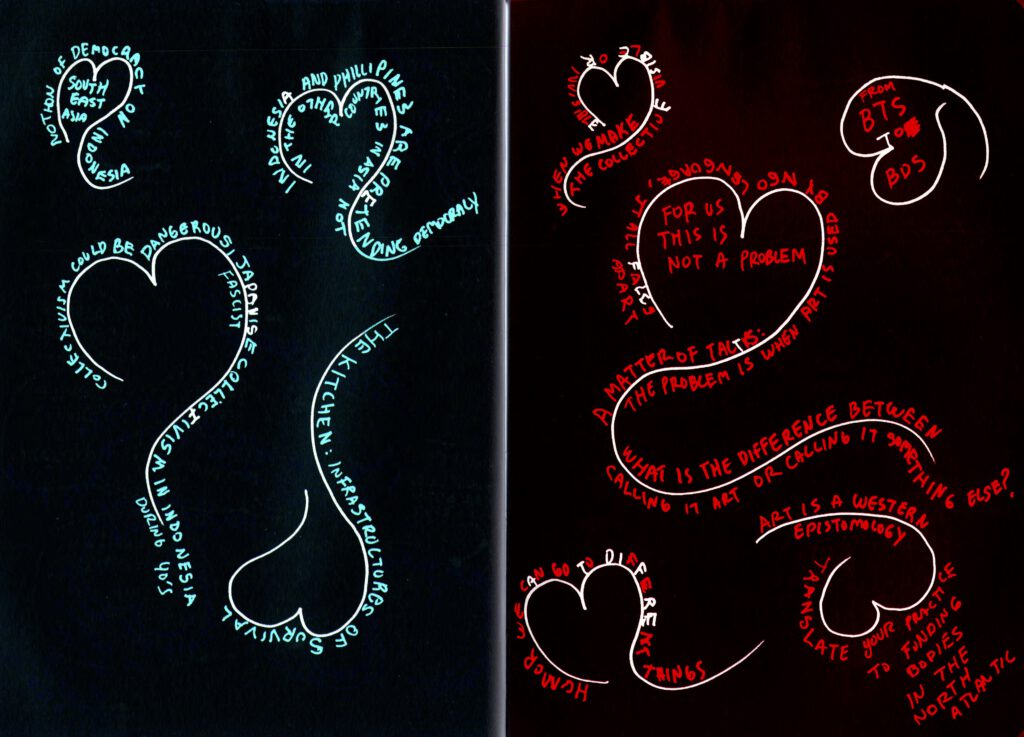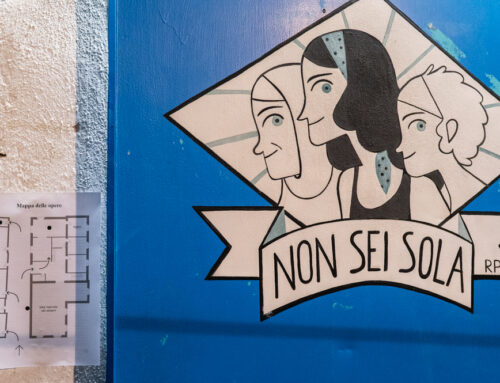Creative Institutionalims in an Asiocentric World
farid rakun (ruangrupa), Jeroen de Kloet, Ming Tiampo.
Harvest by Daniel Aguilar and Diana Cantarey
Hosted by Nuraini Juliastuti
farid rakun’s thoughts on collectivism were posited with reference to his long-term engagement with ruangrupa. Collective works, rakun argued, were based on the complexity of maintenance practices. Like many other art and cultural initiatives which emerged in post-1998 Indonesia, ruangrupa came into being to reclaim post-authoritarian public spaces. Furthermore, the collective aimed to cater for interests that were not catered to. As such, it did not produce a collection of individual (art)works but rather spaces and infrastructures caring for people. Here then, the problem becomes the maintenance of such creative spaces for longer periods of time.
Ming Tiampo opened the panel with her research on the art of the Gutai group, illuminating forms of collectivism in post-fascist Japan between the 1950s and the 1970s. These artists reflected on the relationship between the individual and the collective, proposing non-hierarchical relations in a very hierarchical society. Art was for them, directly connected to revolutionary practice. But here, then, the individual does not disappear in the collective because she is a tool to resist fascism as a critical thinker and creator working in relation with others. As such, Gutai’s works were made up of interconnected individual performances. As elaborated by Tiampo, thus, temporary communities emerged through the work of Gutai as an articulation of individualism and collectivism shaped inside and outside art.
ruangrupa has brought its practice to Kassel and has been criticised for being too didactic, for including too many words, texts, and diagrams, and for consisting mainly of meetings involving the public. This criticism, however, must be read against the grain of persisting object-oriented focus in the international art world that ruangrupa was critiquing in the first place. rakun argues that challenging social contexts produce the most interesting attempts to creatively institutionalise progressive thought and set up collective institutions.
Drawing on his research on K-Pop and J-Pop group bands, Jeroen de Kloet insisted that forms of collectivism in popular culture should not be dismissed as trivial. Situating popular music groups as examples of community-making and collective practices prompted a new discussion in the panel about commodified collectivism, as entangled with fandoms’ engagement with bands such as South Korean BTS and Japanese AK48. Connecting these examples to the Beijing-based art space Institute for Provocation, de Kloet argued that in authoritarian contexts, resistance politics must play the system with humour and other ‘agile tactics’.
Speakers invited the audience to creatively think about typologies and genealogies of collectives and collectivism across social and political contexts in Asia. In different historical junctures, those served as survival infrastructure and art practice. As farid rakun remarked, ‘autonomous art is limited art’.



